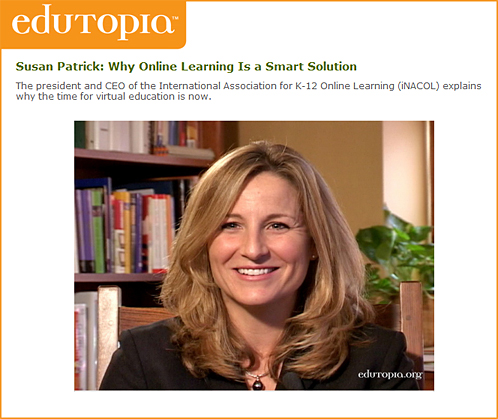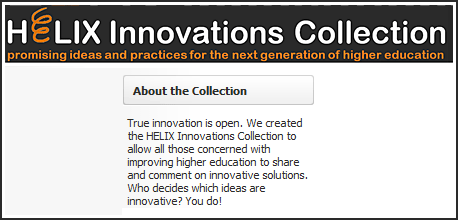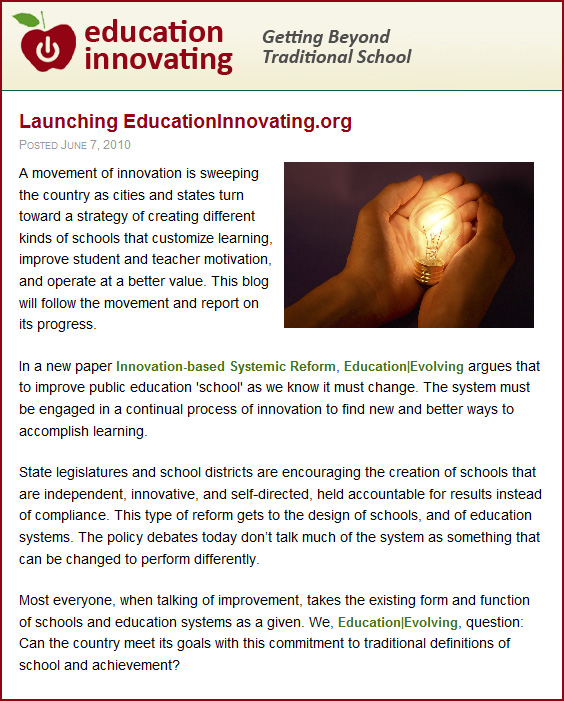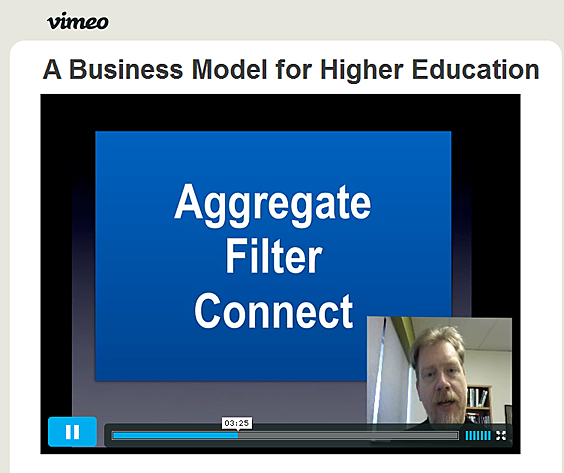Infographic: The NewsScape – 8 sources of value creation in a post-channel media world — from Ross Dawson and futureexploration.net
Distance Education: The Centralization vs. Decentralization Debate — from Faculty Focus
The debate for “control” of distance education at institutions of higher learning continues. On one side, the administration side, there is a need for centralization of operations, to include course development, instructor training and development, scheduling, evaluation, and student and faculty issues. On the other side of the debate, faculty leaders (deans, department chairs, program coordinators) tend to favor decentralization.
In June 2010, the Western Cooperative for Educational Telecommunication (WCET) asked the membership how institutions were doing with this issue: centralization vs. de-centralization. Twenty-three administrators (provosts, VPs, associate VPs, directors, associate directors, COOs, deans, associate deans) and faculty members provided their valuable insights on the issue.
Lecture Capture: Policy and Strategy — University Business by Ellen Ullman
What is happening to the pedagogical process because of lecture capture?
July/August 2010 2010
HELIX Innovations Collection Press Release
A NEW, CROWDSOURCED RESOURCE FOR HIGHER EDUCATION PRACTITIONERS, RESEARCHERS, AND POLICY MAKERS HIGHLIGHTS POSTSECONDARY INNOVATION
The Higher Education Leadership and Innovation eXchange Launches the HELIX Innovations Collection
Boston, Massachusetts – August 19, 2010 – The Higher Education Leadership and Innovation eXchange announces the launch of their online, crowdsourced resource HELIX Innovations Collection at http://innovations.helixhighered.com. The Innovations Collection is intended to spark conversation about new ideas and promising practices for the next generation of higher education.
“The Collection invites higher education practitioners, researchers, and policy makers to make their voices heard and speak out about potential solutions to the challenges faced by the education field today,” said Jim Woodell, HELIX co-founder. “True innovation is open. We created the HELIX Innovations Collection to allow everyone concerned with improving higher education to share and comment on innovative solutions.”
Applying the interactive potential of Web 2.0 technologies to problems in higher education provides the opportunity to share innovations quickly, identify their potential, and refine them with the help of peers worldwide. Visitors to the Collection can suggest innovative solutions, comment on suggested ideas, and rate an idea’s potential to influence the field along several ‘innovation dimensions’.
“It is our hope that the innovations which receive broad support and fine-tuning by the ‘crowd’ will be picked up by practitioners in the field and discussed, piloted, and perhaps even implemented by their home institutions. We hope that true linkages between and among research, policy, and practice will be forged from such collaborative efforts,” said HELIX co-founder Greg Lamontagne.
About the Higher Education Leadership & Innovation eXchange (HELIX)
HELIX is a networking and information sharing resource for Higher Education research, policy, and practice. Founded in 2010 by Jim Woodell and Greg Lamontagne, HELIX is located in Boston Massachusetts. More information is available at http://www.helixhighered.com.
Innovate to Educate: [Re]Design for Personalize Learning — from mobl21.com/blog
The Symposium on [Re]Design for Personalized Learning has begun.
An initiative of the SIIA (Software & Information Industry Association) with ASCD (formerly the Association for Supervision and Curriculum Development) and the Council of Chief State School Officers (CCSSO), this collaborative effort asserts that the education system can more efficiently and effectively meet the needs of all students through a true paradigm shift from a mass production to a mass customization learning system.
An excerpt from the SIIA-ASCD-CCSSO Symposium Primer:
Some education leaders are becoming more focused on personalizing learning as critical to meeting the needs of all students. They understand that changing student outcomes requires transforming their experience and our current education system. They recognize the definition of educational insanity: offering the same type of education model over and over again, and expecting a different result. These leaders also see that educational equity is not simply about equal access and inputs, but as importantly requires that a student’s educational path, curriculum, instruction and schedule be personalized to meet her unique needs. Reform efforts that continue to focus on the factory model, one-size fits all approach to learning are unlikely to make a sufficient difference for too many students in this knowledge-age when expectations are higher than ever.
In contrast to trends in other industries to personalize products, services, and the user experience – in part by leveraging continually evolving technologies – education has only scratched the surface on the potential to personalize the learner experience. Such efforts continue to be the exception rather than the rule and often represent a “tweaking” of the traditional model rather than the necessary systemic redesign of how we educate our children. Similarly, students have come to expect personalization in every other aspect of their lives, including through services like Facebook, Netflix and iTunes, to name a few. If Google and Amazon can thoughtfully leverage customer data and virtual communities to better serve each person’s unique preferences and interests from afar, then education can do so for each student from a near — to understand each one’s performance level, learning style and learning preferences and then adjust instructional strategies and content to meet those needs.
Read the full primer here: http://www.siia.net/pli/primer.doc
.
From DSC:
Eventually, we will have to deal with some major changing student expectations. Perhaps that’s this year..? Next year? 5 years down the line…? I’m not sure. But with the storm brewing, we don’t want to discount changing student expectations. We need to adapt and deliver and meet changing expectations.
From DSC:
Two items I read this morning remind me of the need to be very flexible — as the world is full of change:
- RIP Google Wave
NEW YORK (CNNMoney.com) — Google’s attempt to reinvent e-mail has fizzled. The company said Wednesday it is pulling the plug on Google Wave, a collaborative tool that drew intense attention when it debuted last year. “Wave has not seen the user adoption we would have liked,” Urs Hölzle, Google’s senior vice president of operations, wrote in a post on the company’s blog. “We don’t plan to continue developing Wave as a standalone product, but we will maintain the site at least through the end of the year and extend the technology for use in other Google projects.” - Apple will be phasing out the ALI website
On September 3, 2010, Apple will be phasing out the ALI website and folks are encouraged to visit iTunes U instead. Apple believes that iTunes U is the best way to meet the growing needs of teachers and students demanding flexible access to world-class curriculum and learning resources.
From DSC:
These two items are in addition to the fairly recent announcement that NING-based groups would be charged for services that were previously free of charge.
As an instructional technologist, these waters are rough. Picking the right vendor and the right product is not easy — but one develops some principles over time. As an example: For best adoption, follow the “KISS principle.” Google Wave floundered because it was too complex — it was understood by the programmers at Google who were joined by a very limited # of folks after that…but the product was not comprehended by the masses.
Furthermore, this move by Google to pull the plug here is troubling for various types of institutions — whether they be in higher ed, K-12, or in the corporate world — as we look towards cloud-based applications to help serve the needs of our organizations. If those apps have a life span of 12-18 months…that’s not going to cut it. We need greater stability than that.
But we may not get it…so how do we respond? We need to be able to change — quickly; and we don’t implement a product without having an escape plan/backup plan in place.
I wonder…will organizations take more of a “wait and see” approach before implementing cloud-based apps? Perhaps.
Further info on iTunes U:
There are over 800 universities with active iTunes U sites. Nearly half of these institutions — including Stanford, Yale, MIT, Oxford, and UC Berkeley — distribute their content publicly on the iTunes Store. In addition, cultural and education institutions such as the Library of Congress, public broadcasting, and state departments of education also contribute to this growing educational content repository which now includes over 325,000 free lectures, audiobooks, lesson plans, and more. iTunes U is the ideal resource for educators who want to gain insight into curriculum being taught world wide, get access to primary resources, and find inspiration for enhancing teaching and learning with technology.
















